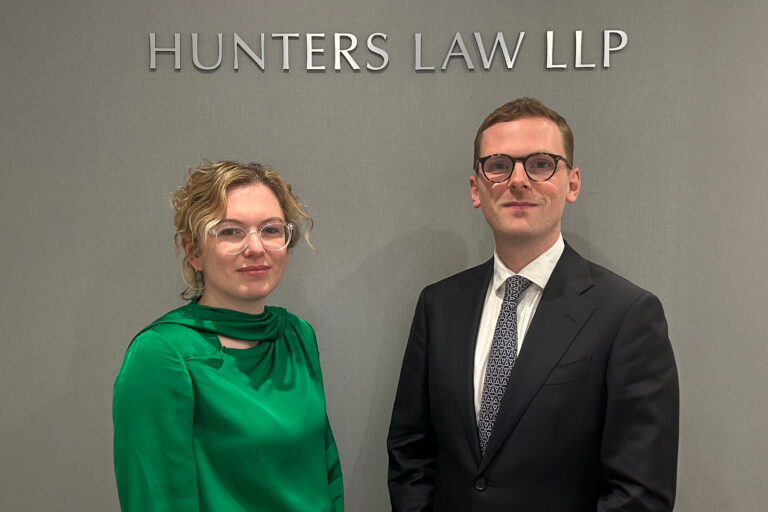Daniel Watson discusses how it is time to treat trusts with neutrality and fairness in the FTAdviser

Time to treat trusts with neutrality and fairness
The UK government is currently considering major reform of the taxation of trusts. In November 2018, it launched a public consultation to that end, inviting views on the principles that, in the government’s view, should form the basis of the taxation of trusts: transparency, fairness / neutrality, and simplicity. The consultation document set out examples of where the government felt these principles were not met, and sought views for and against reform. The consultation closed at the end of February 2019, and practitioners and clients with any involvement with trusts now await the government’s resulting policy proposals.
It therefore seems an appropriate time to consider generally the purpose of trusts, and their current tax treatment and the ways in which this might be reformed. The focus of the government’s consultation is primarily the tax treatment – in particular, Inheritance tax (‘IHT’) – of private trusts for individuals. Accordingly, this article focuses on the tax treatment of life interest trusts, discretionary trusts, and vulnerable beneficiary trusts.
Transparency, fairness and neutrality, and simplicity constitute a reasonable approach to ensure an effective trust taxation system. Tax neutrality is one of the government’s key aims in assessing the tax treatment of trusts. Neutrality is taken to mean ensuring that tax considerations neither incentivise nor disincentivise the use of trusts. There are many examples where the use of trusts is clearly disincentivised by the existing tax regime, where the aims of fairness and neutrality are not met, and where reform would be desirable.
The current landscape
Trusts are sometimes viewed as morally questionable and inherently obfuscatory mechanisms, used primarily to hide wealth and avoid or evade tax. The consultation document suggests that the government believes that some trusts may still be used for tax avoidance / evasion. In reality, the taxation of trusts in the UK has in some areas become so unduly onerous and complex that it can disincentivise the use of trusts: a result which is contrary to the aims of the consultation. Most clients create trusts not for the purpose of saving tax, but for a number of wholly legitimate reasons: asset-protection (for example, to avoid assets being at risk in divorce financial proceedings); preserving major assets such as farmland and heritage property; providing for inter-generational family planning or to ensure a long term family legacy; or providing for vulnerable people. Tax avoidance is no longer a significant motivator.
Two particularly common types of trust are lifetime interest-in-possession (IIP) trusts – trusts created during a settlor’s lifetime which give the beneficiary the right to benefit from the trust income / property during their life, but no right to the underlying capital and discretionary trusts. Lifetime IIP trusts can be a particularly useful way of providing for family members, vulnerable people, or indeed settlors themselves. Discretionary trusts are invaluable where it is desirable for the trustees to use their judgment as to who should benefit and to what extent (if at all) from a trust, depending on the beneficiaries’ circumstances. Discretionary trusts can be particularly useful when used in a Will, enabling family members most in need of financial assistance to receive it, and protecting against the risk of profligate beneficiaries squandering cash.
How are lifetime IIP / discretionary trusts taxed?
Lifetime IIP trusts (created post-22nd March 2006) and discretionary trusts are subject to the ‘relevant property regime’ for IHT purposes. This regime charges IHT at 20% of the value of property settled into the trust after any exemptions and reliefs, and deduction of the IHT nil-rate band (currently £325,000). Thereafter, an IHT charge arises every ten years up to a maximum of 6% of the value of the trust assets (the ‘periodic charge’), as well as a proportion of the periodic charge every time property leaves the trust (the ‘exit charge’).
The aim of the relevant property regime is to equalise, so far as possible, the IHT which would be payable were property to be passed on to the next generation every 30 years (an approximation for the length of a generation) on death, as compared with leaving assets in trust. The comparison with the tax payable at 30 year intervals on the death of an individual is misleading, however, since individuals have lifetime tax planning opportunities which do not exist for trusts for example, the ability to make potentially exempt transfers (PETs) for IHT purposes. There are also other disadvantages to be borne in mind.
Relevant property trusts suffer IHT at a maximum of 38% during the first 30 years of their existence – just under the 40% death rate of IHT for individuals. However, trusts do not benefit from a Capital Gains Tax (‘CGT’) uplift on the death of a beneficiary (contrary to assets which are retained in outright ownership). The need to raise cash to fund periodic charges and exit charges, and the administrative costs associated with reporting the liability, carry a significant opportunity cost and can be disproportionate to the size of the trust. For trusts that hold only or mainly illiquid assets, the periodic charge can mean that there are insufficient funds available to settle the charge. Non-trust assets may often need to be added or loaned to the trust to pay for periodic charges, which leads to further complexity. In the case of discretionary trusts, although these factors are evidently negative, they can fairly be seen as the price to be paid for the benefit of the flexibility, protection and control which they offer.
The government’s consultation suggests at least a possibility that the IHT periodic charge rate for relevant property trusts may increase. Any proposal to increase the periodic charge rate should be considered very carefully. If the rate were to increase, this could cause substantial problems for a number of trusts, including long-running family trusts. Any increase in the current rate of IHT would effectively have a retroactive effect, such that trusts previously entered into with sensible and legitimate planning objectives might immediately become unviable. The end result could well be that family estates and structures designed for asset protection and preservation may be broken up. It is difficult to see how this would be for the public benefit, or a fair outcome.
In the case of lifetime IIP trusts, fairness and neutrality are lacking in their tax treatment. Before the Finance Act 2006, settling property into a lifetime IIP trust would have been a PET for IHT purposes. In other words, such transfers did not trigger an immediate charge to IHT provided the settlor survived the transfer by seven years (in line with the treatment of outright lifetime gifts to individuals, which today continue to be treated as PETs). Following the 2006 changes, transfers into lifetime IIP trusts fell within the relevant property regime, giving rise to the immediate 20% IHT entry charge, and periodic and exit charges referred to above.
The 2006 changes seemed to reflect a perception that trusts were per se used for tax avoidance, and that their use should therefore be discouraged. This perception is an old chestnut, but one worth considering again. A straightforward IIP trust is not generally considered to be a mechanism for tax avoidance, particularly when seen in conjunction with the anti-avoidance provisions of the Finance Act 1986 and the Inheritance Tax Act 1984. When combined with the General Anti-Abuse Rule (GAAR) and the current disclosure requirements for trusts, it is difficult to see what scope there is for tax avoidance in the context of lifetime IIP trusts. The tax treatment of post-2006 lifetime IIP trusts is therefore neither fair nor neutral, as it discourages their use when compared with making an outright gift. The most neutral approach would be to liken a transfer into a lifetime IIP trust to an outright gift to an individual, given that the intention to benefit a third party and to remove assets from the settlor’s estate is the same. The current regime could be reconsidered in this regard, in line with the principles of the consultation. Applying the principles of fairness and neutrality should result in transfers to lifetime IIP trusts being treated as PETs for IHT purposes, which would remove the 20% entry charges.
The aims of fairness and neutrality are arguably met in respect of the taxation of discretionary trusts, despite the various costs to which they are subject in the current regime. In the case of lifetime IIP trusts, however, their tax treatment in the current regime does not meet the aims of fairness and neutrality.
In the case of vulnerable beneficiary trusts, the legislative criteria for such trusts to qualify for beneficial treatment are unduly restrictive and, as a result, unfair.
Vulnerable beneficiary trusts / voluntary settlements
Vulnerable beneficiary trusts are trusts for beneficiaries with a disability, or trusts for bereaved minors. Although vulnerable beneficiary trusts carry some advantageous income tax and CGT treatment, the statutory definition of ‘vulnerable person’ is so narrow that it prevents many clearly vulnerable people, often with a significant form of vulnerability which falls outside the scope of the legislation, from qualifying. In addition, there is considerable work involved to ensure that such trust benefit from positive tax treatment, often resulting in higher accountancy / legal fees than for other trusts. A simplified and broader definition of ‘vulnerable person’ would ensure greater fairness.
By the same token, voluntary settlements (trusts where settlors settle assets on themselves) should be permitted to qualify for the same tax treatment as vulnerable beneficiary trusts. Someone may wish to self-settle in order to provide for future, anticipated vulnerability. This could occur where a beneficiary is in the early stages of a degenerative illness, such as dementia or multiple sclerosis. Likewise, people who suffer from a recurring vulnerability such as recurring acute mental illness should receive favourable tax treatment. Why an individual who settles property on himself should be taxed any differently to the same individual retaining such property in his absolute ownership is not clear. This is neither neutral nor fair.
Reform
The lack of fairness and neutrality in the tax treatment of lifetime IIP trusts and vulnerable beneficiary trusts / voluntary settlements are two areas in which reform is needed in order to bring their tax treatment in line with the consultation principles of fairness and neutrality. These are areas in which there can be clear fiscal disadvantages in using a trust, and where the tax treatment of such trusts is not neutral or fair. A fundamental review of the justification of the current tax treatment of such trusts would be welcome, and may go some way to attaining the aims of fairness and neutrality in respect of such trusts.
This article was originally published in the FTAdviser and can be accessed here.





